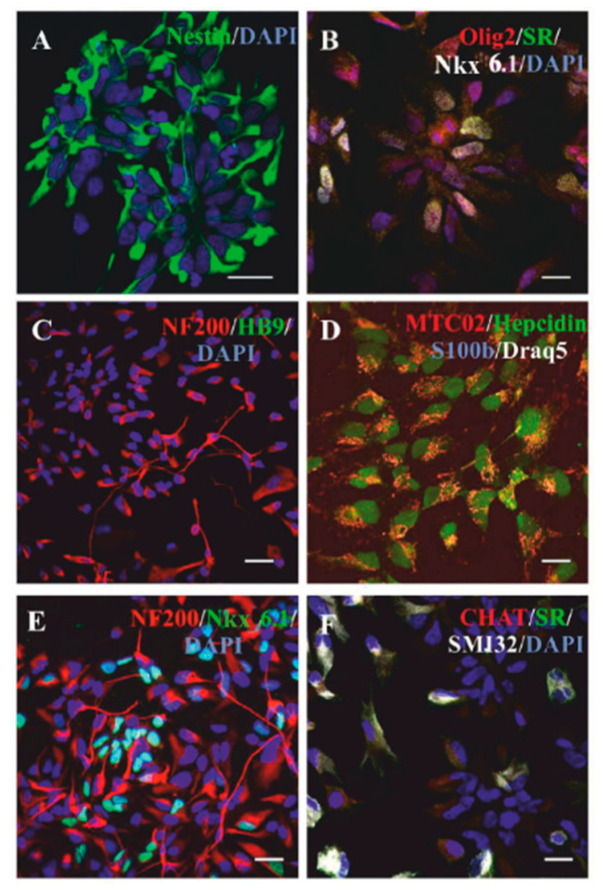Figure 1.
Neural progenitors derived from induced pluripotent cells (NP-iPS) in vitro characteristics. Immunostaining shows that NP-iPS cultures that were used for transplantation at the starting point of differentiation (contained nestin- (A), Olig2-, serotonin-(SR), and Nkx6.1-positive cells (B). At day 0, NP-iPS cultures were NF200-positive, but they did not express a motoneuron (MN)-specific marker HB9 (C). All NP-iPS were positively stained with human mitochondria (MTC02) and expressed a hepcidin (D), but they were S100β-negative (D). NF200 and Nkx6.1 co-staining revealed equal proportions of Nkx6.1-positive and Nkx6.1-negative cells in cultures (E). NP-IPS cultures did not contain acetylcholine transferase (CHAT)-positive cells, and only few cells were SMI32-positive (F). Scale bars = 20 µm.

